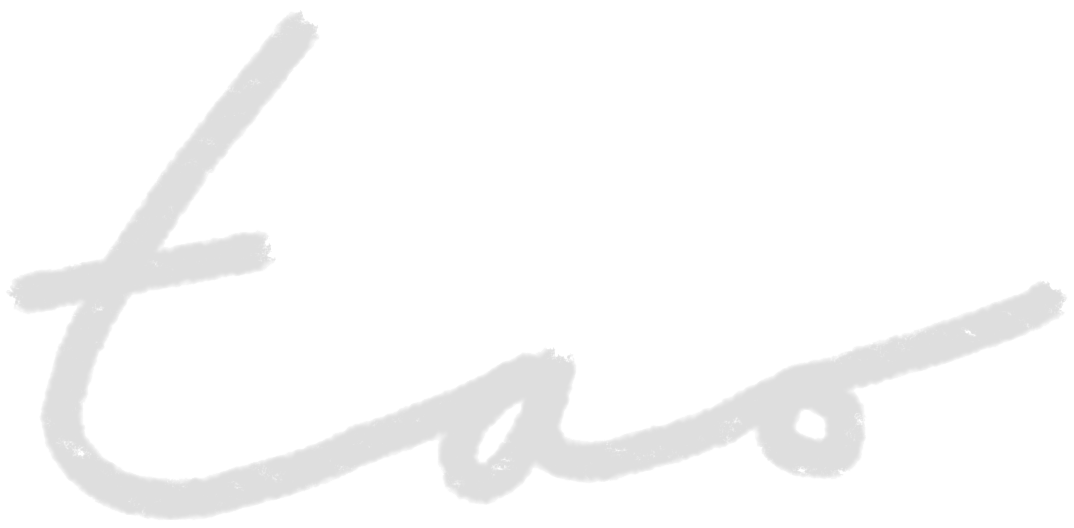
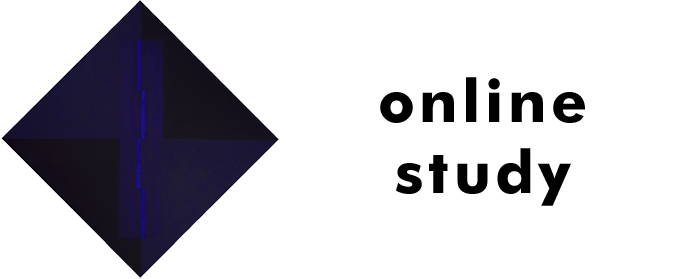
> Introduction to TAO
> Artistic training goals
> Study building
>> Basic studies: craft training
>> 2nd stage: Artistic research assignments
>> 3rd stage: artistic self-discovery / artistic autonomy
> 3 exams
> Tuition fee
>> Graduated tuition fees per training section
> Payment options
> Holiday credits
> Portrait of the artistic departments
>> Painting
>> Composition theory
>> Color theory
>> Drawing
>> Artistic Photography
>> Printmaking / Sculpture / Plastic
> Before registering with TAO
> Target audience of TAO
> On-site networks
> Language
> Registration process
> Who is TAO?
Introduction to TAO
TAO accompanies you step by step in your artistic advancement. Starting from the simplest levels of artistic activity, through demanding artistic research assignments, you finally reach individual self-discovery as an autonomous artist. During the entire apprenticeship you will be guided and challenged individually - on a daily basis if you wish - from home or from wherever you happen to be. Communication takes place via common digital media. Since visual material is often discussed, correspondence by email is very suitable. But video conferences or spontaneous correspondence via WhatsApp or similar are also possible.
Play and experiment are at the center of the artistic exploration, accompanied by strategic investigations, a systematic form of play. The laws of life given to us humans within the architecture of creation offer us orientation and provide ideas for our artistic projects. Creating art is therefore a challenge to the creative abilities of the human spirit, which, in intensive cooperation with TAO, will be better and better able to productively tap into the cosmological laws of life and to be able to implement them individually and artistically.

TAO sees itself as a mentor, to discover these abilities that are given to all of us, to recognize them and to steer them in the right direction in order to fully exploit intellectual and technical potential.
Artistic training goals are:
- craftsmanship perfection
- visualization and safe handling of the laws of perception and design (theory of composition), of the laws of color (theory of color)
- establishment of an art-historical foundation
- ability to (objectively) understand works of art from their inner laws (objective work analysis)
- intellectual development in terms of the ability to accept criticism
- broadening of the spectrum of perception
- sensitization of perception
- appreciation of the finest creative nuances
- opening to transcendent truths
- activation and channeling of the creative energy flow
- criticism of social ideologies
You can stay as long as you like at any level of education. It is important that if you want to complete all training levels, you really exhaust and perfect each individual stage. Ultimately, you decide when to start a higher stage. But consider this: art is the highest form of human expression, it is the greatest task in life imaginable. You ultimately explore the unknown and give it an artistic form.
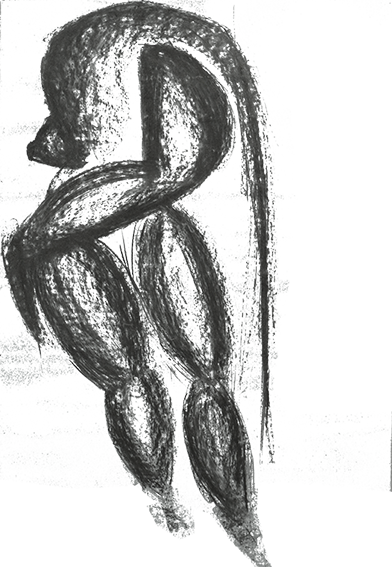
TAO offers constructive criticism. As a learner, your most important requirements are critical thinking and endurance. The more often you contact TAO, the more intensive and sustainable your training can be. Actively look forward to new suggestions again and again, do not despair of setbacks, no master has yet fallen from the sky.
In order to start studying with TAO, you do not need any prerequisites.
Trust in TAO's artistic and art-pedagogical expertise, which brings many decades of experience for successful personal, sensitive communication.
In addition to your personal correspondence with TAO, forums for artistic debate are available to you on our digital platforms. In this way, collegial friendships can form, which will do your individual artistic development good.
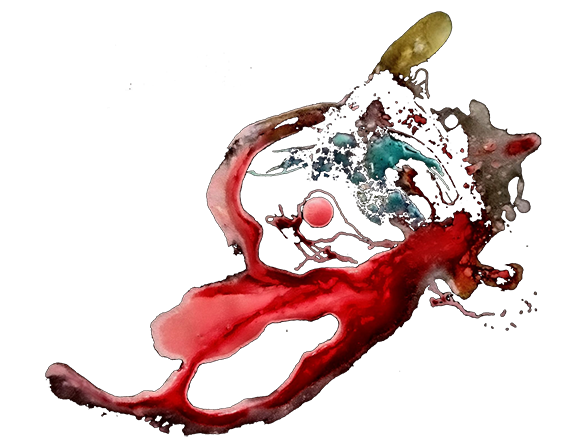
The basis of the training are the gestalt laws of autonomous art. Since autonomy and intellectual freedom belong together, the argumentative focus is always on autonomous art. It crystallizes the entire development of art history up to the present day. As a result, we have an arsenal of expressive possibilities at our disposal from which everyone can draw individually and find their own individual art. You will get to know this arsenal of expressive possibilities through TAO.
Study building
Basic studies: craft training
The study of TAO has a pyramidal structure. The basis is the manual training. It provides the broad foundation for spiritual and artistic development, although spirit must already be contained in every manual exercise in order to be able to achieve a living effect. Dexterity and spiritual sensitivity and penetration go hand in hand. The purpose of the technical exercises is to let the spirit resonate sensually ("sound" / "Klang"). Spirit guides the brush, the pencil, the spatula, so that every technical exercise already provides opportunities for spiritual liberation.
As part of the manual training, our fine motor skills are used and trained. Physical sensitivity fosters mental sensitivity. Spiritual leadership trains physical fine motor skills: there is always a productive interplay between spirit and craft.
Artistic techniques are privileged media of spiritual liberation. A diverse range of different artistic techniques enables the design of unusual, inspiring spiritual-sensual vibrations in colour, form and texture. The aim of the art is to set the viewer himself in vibration, thereby inspiring him and inducing mental transformations. Art becomes the medium of spiritual change, the highest educational instrument of all.
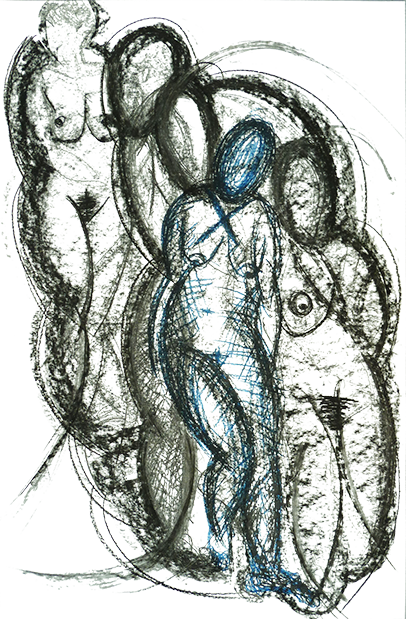
Painting and drawing as well as all other artistic disciplines open up sensual-spiritual resonance spaces into which we can immerse ourselves in order to be freed from our earthly barriers of reason. We vibrate in a new way, we vibrate differently, we see the world with different, alert eyes and are happy about the opportunity to experience new insights into the world in its complex legal constitution and to implement it aesthetically.
Every spot of color, every dot of charcoal or graphite already harbors the potential for spiritual change. However, it depends on its special design so that it can develop its special effect. We learn the laws of design that help us transform the banal into the extraordinary, the special. Criteria of beauty and aesthetics support our path to true knowledge beyond clumsy and often inhuman intellectual activity, beyond culture-industrial standardization. We use our mind as an instrument of the spirit. Without a spirit, it remains without orientation and all too often gets caught up in inanimate rationality that disconnects from life.
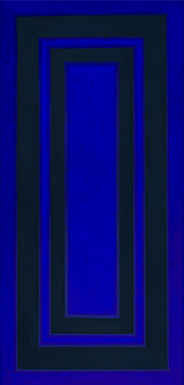
Therefore, at every level of TAO training, the "sound" (transcendent basic sound on the pictorial plane, orig. germ.: "Klang auf der Fläche") is the highest goal of any creative activity. Together with TAO, you explore the legal basis for a successful inspiration of matter to be designed. Once you have penetrated these legal foundations, you will be able to give your artistic work a clear orientation. If you know that you are looking for the "sound", any work will lead to research work. You explore the possibilities of "sound".
Through numerous exercises you will approach the “secret” code of “sound” / "Klang". You explore the reasons why a work is successful and effective and why not. Together with TAO you look behind the scenes of the beautiful appearance and recognize the aesthetic mechanisms that are responsible for a sonorous effect of a work.
Each exercise is about combining spontaneity and reflection. Spontaneity requires intellectual freedom. Spontaneous, playful handling is a mentally liberated handling of the artistic material. Artistic spontaneity is methodically controlled (strategic) liveliness, life pushed to the extreme in its creative power. The artist himself becomes the creator, while at the same time remaining involved as a servant of creation in the symbiotic cycle of the cosmos of life. If he spiritually penetrates the laws of nature, perception, the legal context of the architecture of creation and truly empathizes with them and trains and implements them technically, he creates an orienting productive basis for his individual contribution to a successful life that is able to radiate highly inspiring.
Manual training includes:
- Lesson course in composition theory
- Lesson course in color theory
- Lesson course painting, drawing, photography, sculpture, plastic in selection or combination
- Lesson course in art history
All of the named courses of study can be worked through one after the other or in parallel. If parallel processing is desired, then exactly in the order listed above. Above all, the theory of composition offers the decisive basis for all further courses.
2nd stage: Artistic research assignments
During this phase of your studies, you will learn about the methods of artistic research. After completing the technical training, concentrated artistic research assignments follow. Here, art historical works are analyzed and their semantic and syntactic problems are examined and questioned. The art-historical work is literally taken apart on both an art-theoretical and a technical level. This encircling research serves as a source of inspiration for the development of one's own artistic point of view. The old, the familiar, the critical is transformed into something new.
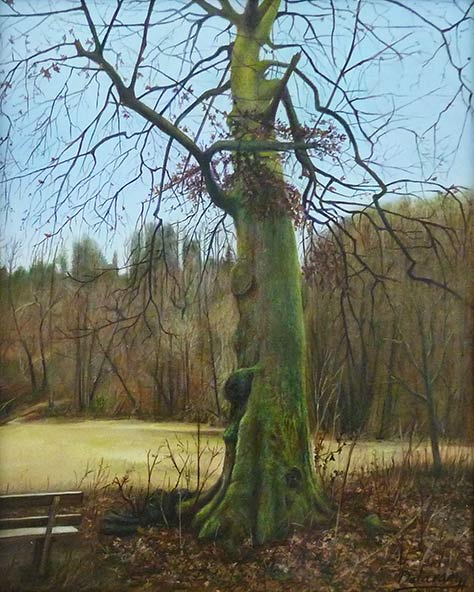
Art is not a history-free space. Artistic development requires an art historical background. Something new emerges from the old, which is often worn out or rediscovered.
In this part of the training you will get to know the method of objective work analysis and apply it under the constant supervision of TAO. The objective research result now becomes a source of inspiration for your artistic exploration. You will experience a highly productive symbiosis of theoretical and practical research work. Own artistic standpoints emerge.
3rd stage: artistic self-discovery / artistic autonomy
The last training area is dedicated to artistic self-discovery. All the necessary skills and knowledge are ready to start individually as an artist. Here you direct yourself, your artistic research runs according to your own specifications and ideas. TAO accompanies you with advice and support. You develop your very own, unmistakable artistic signature. This consists of a clearly formulatable artistic concept that reflects your very own artistic mission.
We are at the top of the pyramid, all energies are concentrated here and offer the artist-to-be the energetic basis for his spiritual and artistic liberation. The artist has found his way, he can tap into the power sources of life at will and implement them with skill. The artist and his work become a source of inspiration for spiritual transformations.
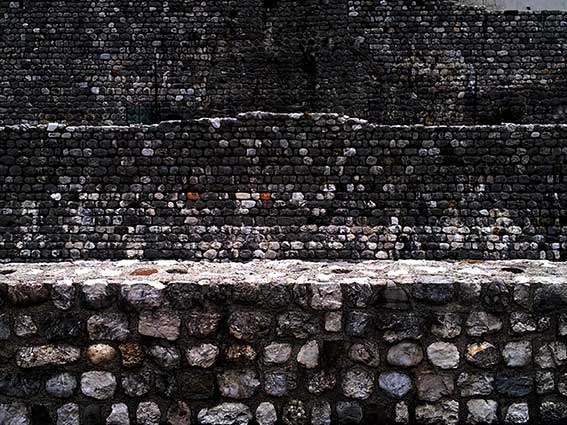
3 exams
Each part of the course ends with a distance examination. Since you are in the exam phase from the start (each completed work on a task is graded), you collect all grades that qualify you to register for the exam. The exam consists of answering a questionnaire that asks about the content of the respective study section. On the technical level, a free artistic final work is carried out. After the third examination you will receive a certificate of completion, an individual assessment of your artistic development and a certificate.
Tuition fee
You pay monthly and can withdraw from the study contract monthly. If you sign up for three months, the monthly rate will be cheaper. If you make an upfront payment for half a year, you will get an even better discount.
You can complete your studies for as long as you like. If you are someone who needs formal guidelines, here is a suggestion to organize your studies in terms of time and money: You plan to invest three years in your art education. You then invest a year and a half in basic studies, a year in artistic research and half a year in artistic self-discovery. From a financial point of view, you pay in advance every six months, as this is the cheapest option.
If you would like to complete the course freely without any time constraints and you want to get to grips with it as intensively as possible, you can proceed as follows: You pay half a year in advance because of the favorable discount and use this principle to fish your way through to the end of the course. Very easily.
If you are not able to plan in terms of time and finances over a longer period of time, you can of course simply pay the monthly rate. This also offers you the opportunity to pause your studies at any time in order to resume them at any time.
Graduated tuition fees per training section
After each successful exam, the tuition fee is significantly reduced.
Tuition fees for basic studies (1st stage of study)
1 month (30 days) (can start at any time) costs 149 euros
3 months cost 399 euros
6 months cost 749 euros
Tuition fees for artistic research work (2nd phase of study)
1 month (30 days) (can start at any time) costs 120 euros
3 months cost 309 euros
6 months cost 569 euros
Tuition fees for artistic self-discovery (3rd phase of study)
1 month (30 days) (can start at any time) costs EUR 99
3 months cost 249 euros
6 months cost 449 euros
The examination fee is 80 euros.
If, contrary to expectations, you do not have the opportunity to complete your studies during a payment phase, please contact TAO - we will find a solution!
Payment options
You can pay by
transfer
PayPal
Bitcoin
You will receive more detailed information during your registration.
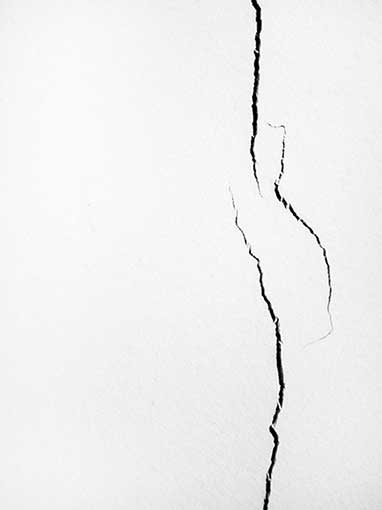
Holiday credits
If you pay 6 months in advance, you can have 2 weeks of holiday credited within the current 6 months. This extends your study time by 2 weeks free of charge. If you do not apply for a holiday in one payment phase, you can extend the holiday period by a further 2 weeks in the following payment phase, so that 4 weeks are free of charge. You can apply for a maximum of 3 vacation days per phase of study.
This regulation does not apply to a monthly payment or a 3-month advance payment.
Portrait of the artistic departments
Painting
Painting is the queen of studying with TAO. If you want to learn a lot or maybe you don't know which artistic field to choose, then choose painting! The arsenal of artistic expression here is simply gigantic. Colour, composition and technique form an incredibly inspiring symbiosis. Painting is lived spiritual freedom. There are no limits to the possibilities of expression. At the same time, dealing with painting provides an enormous sensitization of perception.
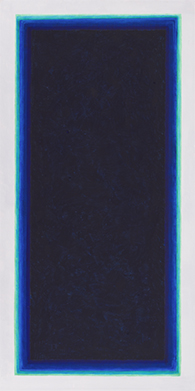
You will learn many challenging painting techniques that help promote autonomous artistic expression. The following techniques are taught in the context of oil painting:
- impressive and expressive color setting
- modulation
- gestural painting in the broadest sense
- sgraffito
- layer painting
- glaze
- made surface (“Faktur”)
- realism
- color contrast painting
You will also receive work assignments in dealing with watercolor, gouache, acrylic, tempera, colored pencils, colored chalk, etc.
In addition, you will gain profound insights into the technical construction systems of paintings of old and new times.
In addition, TAO teaches you how to produce and handle the coloring and painting materials, as well as the preparation and treatment of the most diverse painting grounds. How can you make your own oil, water, gouache or tempera paints etc.?
At TAO, painting is always linked to the theory of composition and color theory. Each lesson includes an intensive technical study as well as tasks in which compositional and color-interacting requirements are combined with the technical requirements, so that the creation of a work is literally surrounded by the decisive disciplines of composition, color and technique. Studying with TAO is therefore always interdisciplinary. At the end of each lesson there is a free work in which the technique discussed is to be implemented with your own artistic ideas.
TAO offers impulses, accompanies your technical and mental training and at the same time releases you into freedom, which can only really flourish when there is a factual foundation.
The basic course in painting is complete when the following tasks have been completed:
10 painting lessons (oil paints)
6 painting lessons (watercolor, tempera, gouache, acrylic, colored chalks, colored pencils)
10 lessons in composition theory
9 lessons of color theory
5 lessons on the subject of technical construction systems of paintings of old and new times, making your own coloring agents and binders
at least 10 lessons of art history
An intensive, instructive time awaits you! After completing the basic course, you can then register for the examination.
After passing the exam, you enter the second phase of your studies of painting. Here you will become familiar with the method of objective work analysis, which will help you to extract factual knowledge from works of art from art history. In the context of artistic research assignments, the objective work analysis of works of art offers the basis for the development of one's own artistic point of view. Based on the objective, structural knowledge about the works, you will be able to control your inspirations in such a way that your own new artistic point of view can grow from the confrontation with the "old", "established".
The second phase of painting is completed when the following areas of responsibility have been met:
min. 20 artistic researches
After passing the exam, you will enter the third phase of your studies of painting. Here you are completely free in everything you do. You develop your very own artistic concept and use painting in an unmistakable way. TAO accompanies and supports you and assesses the validity of the artistic concepts. The third exam seals your degree. At best, you can call yourself autonomous artists.
Composition theory
The theory of composition provides the basis for all artistic disciplines. The universal laws of gestalt perception and their sonorous implementation are encoded in it. The theory of composition encircles and deepens the universal themes of art with regard to the sonorous organization of the pictorial plane.
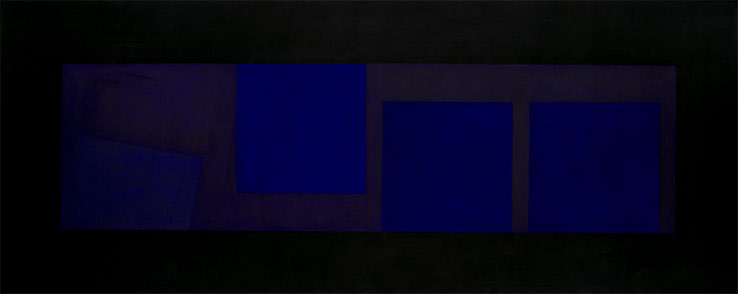
If spiritual liberation occurs through art, then privileged in the field of composition. At the same time, it reveals to us universal laws that enable us to shape the path to spiritual liberation. Comparable to the grammar of our language, there is a manageable set of syntactic rules that allow us to generate and articulate an infinite number of sensual-meaningful meanings. With a small set of manageable grammatical aesthetic rules that can be understood by everyone, the artist has access to the infinite world of imagination, the design of the new and unknown.
TAO's theory of composition includes the laws of spiritual freedom. With this theory we have a treasure in our hands, the importance of which for the goal of spiritual liberation cannot be overestimated.
Color theory
Color is already spiritual in itself, since it immediately triggers a feeling in the viewer and connects him with the cosmos of the conceptually incomprehensible. Artistic color interaction transcends its material basis and leads man into the land of spiritual freedom.
TAO accompanies you in your research into the compositional conditions under which people are made to vibrate by color. In addition, how can the universal laws of color be used to bundle the energies that open the door to new worlds for us?
You will get to know the world of color contrasts. You will study the famous color theory of important artists and practice many stimulating exercises that will reveal the wonder of color to you.
Most importantly, you will learn the secrets of color interaction. It is the actual articulation medium of color design. The goal is to learn to think in color. Autonomous mental action leads to the colored inspiration of matter. Painting then leads to the incarnation of the artistic spirit in the work of art.
Further explanations of the artistic departments
The course of all other subject areas such as drawing, photography, sculpture, etc. is based on the introductions to painting. Here are further explanations of the basic courses.
Drawing
At TAO, drawing is not considered a preliminary stage to painting. Rather, drawing is honored as an autonomous art form with the resulting derivations of autonomous design. Here, too, manual training forms the basis. Manual and technical training includes:
Working with graphite pencils, charcoal, sanguine, ink, Indian ink, crayons in the grayscale area, etc.
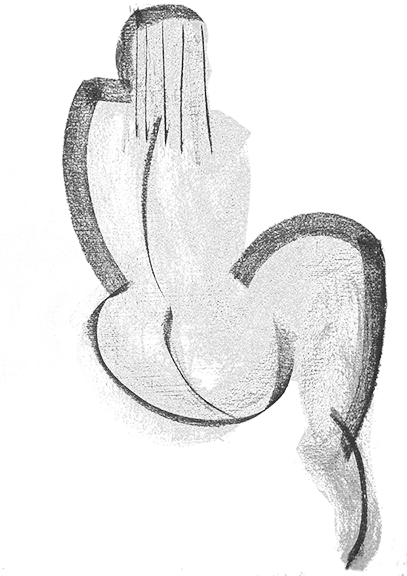
The technical and artistic training includes classic topics such as the exact definition of objects, perspective, free drawing, sketching, etc.
The basis of the autonomous artistic training is the sonorous handling of points, lines and planes and their manual and technical appreciation.
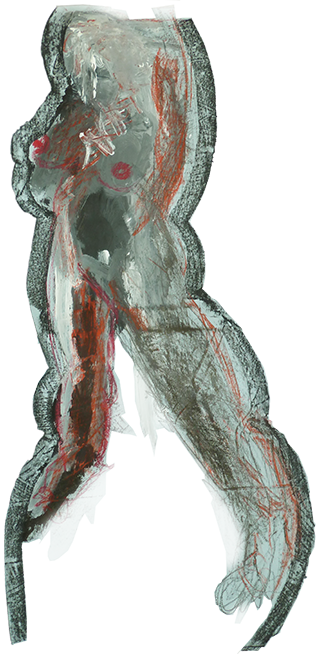
The basic course in drawing is complete when the following tasks have been completed:
10 drawing lessons (interdisciplinary study of compositional, artistic and technical requirements)
7 lessons in nude, portrait, room and nature drawing
10 lessons in composition theory
9 lessons of color theory (optional, but recommended)
at least 10 lessons of art history
If you have technical experience in printing technology, you are welcome to expand your range of expression for the study with TAO.
An intensive, instructive time awaits you in drawing too! After completing the basic course, you can then register for the examination.
The further course of studies in the drawing department can be found in the explanations for the painting department.
Artistic Photography
Artistic photography cannot be reduced to what it is technically best at: depicting and documenting. Photography is an autonomous art form that uses its technical abilities to generate entirely original forms of artistic expression. However, it differs fundamentally from the visual arts such as painting or drawing, in which manual design creates its own autonomous art world. In photography, the shutter release is finally pressed, everything that is decisive for art is placed in front of it: Intuitive anticipation, based on art knowledge, of compositionally autonomous constellations arising in the photographically depictable reality, which are capable of triggering free mental processes. TAO accompanies you in your training to become an autonomous artistic photographer. Analogue and digital photography are treated equally.

The basic course in artistic photography is complete when the following tasks have been completed:
10 lessons of artistic photography (interdisciplinary study of compositional, artistic and technical requirements)
5 Experimental Photography Lessons
10 lessons in composition theory
9 lessons of color theory (optional, but recommended)
at least 10 lessons of art history
An intensive, instructive time awaits you in artistic photography as well! After completing the basic course, you can then register for the examination.
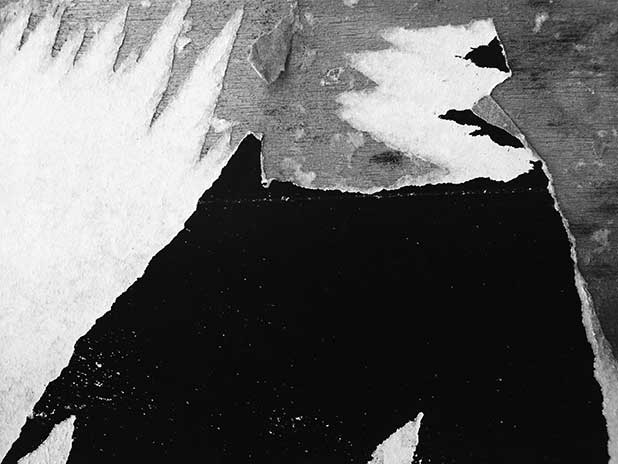
The further course of study in the Artistic Photography department can be found in the explanations for the Painting department.
Printmaking / Sculpture / Plastic
Similar to printmaking, manual skills are also required in sculpting or plastic art. The support provided by TAO is somewhat different here. Here, too, the basis of the course is composition theory and art history, optionally also color theory. However, there is no manual training. TAO focuses on artistic mentoring and education. Otherwise TAO accompanies you as in all other artistic areas in your artistic career. Here, too, daily correspondence can take place: You send in photo material of your developments and TAO will provide expert comments and give you helpful tips for productive, successful progress. TAO develops special tasks for you, which are derived from your previous works. In order to be able to start studying printmaking, sculpture or sculpture at TAO, you must submit meaningful photo material of your work by e-mail. If you want to complete all three stages of study, you must choose painting, drawing or photography as your main subject in the first stage of study. Artistic supervision without additional costs is then possible in the subjects sculpture, sculpture and printmaking or another artistic discipline not listed here (e.g. video art, film, literature, etc.).
Before registering with TAO
Before you decide to study at TAO, you can make an appointment for a consultation. This is anyway strongly recommended to clarify any open questions. Just send us an email and suggest a telephone appointment. Or you write your questions directly in the email and you will receive an answer in no time. Please write to: info@t-a-o.org
Target audience of TAO
The demanding study with TAO appeals to people worldwide who want to use their lifetime with open-minded joy towards new spiritual, sensual, technical, philosophical experiences and who accept a lot of productive and informative effort for this.
On-site networks
Working and supporting together enriches the artistic work of the individual.
Although TAO provides a platform for exchange for all students, it can be helpful for each individual to network with like-minded people in its region. Regular meetings in a shared studio or something similar are therefore recommended. Joint art events, visits to museums and exhibitions, etc. round off personal artistic training.
Of course, local networking also includes organizing exhibitions of your own artistic works. TAO will be happy to support you.
Language
The language at TAO is English and German. When you register, please let us know which language you prefer. If you want to communicate in your mother tongue (e.g. Spanish or French or Russian etc.), just let us know. However, you have to accept certain translation errors. However, the language of the lessons and study texts remains English and German.
Registration process
As already recommended, you should seek a consultation with TAO. As soon as you have no further questions and everything is clarified for you, write an email with the subject: "Registration" to: info@t-a-o.org. TAO will promptly send you the registration form as a PDF, which will seal the contract between you and TAO. You can print this out, fill it out, sign it, photograph it or scan it and send it back by email. You will immediately receive the contract confirmed and signed by TAO.
The contract is only concluded on the day on which the tuition fee is credited to TAO's account. This date may differ slightly from the desired date. If you enclose a bank transfer receipt with your registration, the bank transfer date can be used as the registration date if you wish. The course starts on the day of payment (or registration date) and ends after 30, 90 or 180 days (excluding holiday credits) depending on the amount paid.
You can enroll and start studying within a single day.
You only have to log in / register with TAO once in the manner described above. Because you can easily extend your studies by paying the tuition fee. Studies can continue as soon as a new payment is made. Now you don't have to register again. It is sufficient to send an email in which you informally state the new desired date. Correspondence between you and TAO can simply be continued on this date.
A spontaneous registration and an immediate start is also possible: TAO is sufficient in this case your email address and your proof of payment. You write briefly that you would like to start studying today for a certain period of time, pay the corresponding amount and send the proof of payment by e-mail. You will receive your study documents immediately and you can start.
Who is TAO?
TAO is the digital independence of the art teaching of an innovative free art academy in the heart of Europe, which has been committed to intensive and sustainable artist training for over half a century with great commitment and passion. In TAO it is condensed as a concentrated load of artistic, scientific and art-educational expertise. More than 20 years of experience in the field of interdisciplinary artistic distance learning make TAO a pioneer from the very beginning.
TAO looks forward to seeing you!
.jpg)